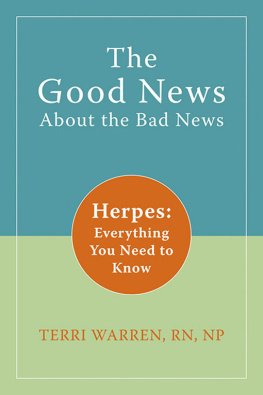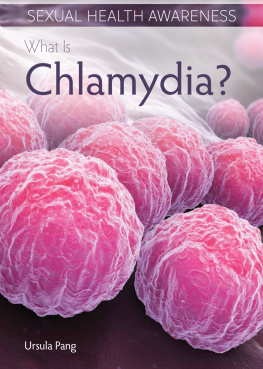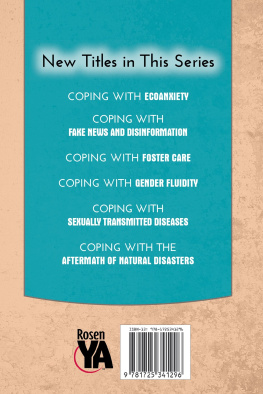Published in 2022 by The Rosen Publishing Group, Inc.
29 East 21st Street, New York, NY 10010
Copyright 2022 by The Rosen Publishing Group, Inc.
First Edition
Portions of this work were originally authored by Erin Staley and published as HPVand Genital Warts. All new material in this edition was authored by Rosie Banks.
All rights reserved. No part of this book may be reproduced in any form without permission in writing from the publisher, except by a reviewer.
Cataloging-in-Publication Data
Names: Banks, Rosie 1978-.
Title: What are HPV and genital warts? / Rosie Banks.
Description: New York : Rosen YA, 2022. | Series: Sexual health awareness | Includes glossary and index.
Identifiers: ISBN 9781499472127 (pbk.) | ISBN 9781499472134 (library bound) | ISBN 9781499472141 (ebook)
Subjects: LCSH: Papillomavirus diseases--Juvenile literature.
Sexually transmitted diseases--Juvenile literature.
Classification: LCC RC168.P15 B36 2022 | DDC 616.9'11--dc23
Manufactured in the United States of America
Some of the images in this book illustrate individuals who are models. The depictions do not imply actual situations or events.
CPSIA Compliance Information: Batch #CWRYA22. For further information contact Rosen Publishing, New York, New York at 1-800-237-9932.
CONTENTS
CHAPTER 1
HPV Basics
CHAPTER 2
What AreGenital Warts?
CHAPTER 3
Preventing HPV
CHAPTER 4
HPV Screeningsand Diagnoses
CHAPTER 5
Life With HPV
INTRODUCTION
A sexually transmitted infectionor STIis a condition passed from one person to another through sexual contact. Human papillomavirus (or HPV) is an STI that has received a lot of attention in the news recentlyand with good reason. The Centers for Disease Control and Prevention (CDC) reports that it is the most common STI. While it has often been depicted as a condition that afflicts just women, thats untrue. HPV can affect nearly everyone, directly or indirectly.
According to the CDC, about 43 million Americans had HPV infections in 2018, many of those in their late teens and early 20s. People with HPV are your friends, family, neighbors, classmates, teachers, and civic leaders. Sometimes undetected until too late, HPV is called a silent killer.
HPV is extremely communicable between sexual partners. In fact, most sexually active people will get at least one type of HPV at some point. As frightening as that may sound, the reality of living with HPV isnt always so scary. Most HPV cases are harmless and wont interfere with your ability to lead a happy, healthy life. Usually, teens and adults with a healthy immune system dissolve the virus, sometimes without even knowing they had it in the first place. But this doesnt mean you get a free-for-all pass when it comes to your sexual health. Why not? There are some cases of HPV that cause short-term or long-term discomfort, pain, and even more severe health issues. HPV can be a serious condition, so its important to know how to protect yourself.
The best way to guard against HPV or any STI is to know the facts. In this book, youll learn about how the virus works and how certain strains of it can lead to genital warts and cancer if not detected early enough. Youll discover what to watch out for, what safety precautions you can take, and what treatments could be helpful depending on your diagnosis. Furthermore, youll find the hard facts and figures concerning HPV. And perhaps most important, youll receive trusted advice on how to seek treatment and follow up with doctors to stay healthy.
You can be responsible for your sexual health by educating yourself about HPV and genital warts. As you do, youll learn the right questions to ask your doctor about how best to take care of your body. Youll also be able to make well-informed choices about your health, and perhaps you can even pass on reliable information to worried friends in need.

Its critical to be honest with your doctor about your health and about any concerns you have about your body.
GENDER ISSUES IN HEALTH CARE
In this book, you'll notice inclusive language is used to reflect the many gender diverse people in our world. Many people don't identify as the sex they were assigned at birth. That designation is determined by a medical professional, usually after looking at a baby's external anatomy and sometimes chromosomes. In contrast, gender identity is how that person feels inside as far as gender and how they express that gender, something sometimes not known to them until later in life . Sex and gender are not the same thing.
For some people, their sex assigned at birth and their gender identity aren't the same. They may identify as nonbinary, meaning they feel their gender cannot be defined within the margins of the male/female binary. Some people were assigned to be male or female due to anatomy at birth but identify more with the other binary gender. These people may or may not undergo gender-affirming surgery. A transgender man, therefore, may have what's often considered "female anatomy, and vice versa.
The trans community needs the same kinds of health-care interventions that the cisgender community (whose gender identity is the same as their assigned sex at birth) receives. Unfortunately, the current health-care systems often fail people for a variety of reasons. Sometimes medical professionals refuse to treat transgender people in the same way, and sometimes it's tough for transgender people to undergo health care related to a gender that's not theirs. Until the gender diverse community receives equal health care, everyone must advocate for the screenings, diagnoses, and procedures they need. These include the measures needed to fight against H PV and its effects outlined in this book.

A ccording to the CDC, there were an estimated 13 million new HPV infections in 2018. HPV is highly contagiousand therefore common. There are many types, and most dont cause problems. While many HPV infections can be harmless, an untreated HPV infection can put someone at risk for such diseases as genital warts and cervical cancer.
CDC data suggests that nearly 36,000 HPV-associated cancers occur in the United States each year. Cervical cancer and cancers of the back of the throat are the most common HPV-related cancers. About 80 percent of all sexually active people have been infected with HPV at some point in their lives. Thats why its imperative to be educated about safe-sex practices.
CONTAGIOUS VIRUS
To get an understanding of what HPV really is, lets start with its name. HPV stands for human papillomavirus. Human papillomavirus is a small, double-stranded DNA virus that lives in the epithelial cells of the skins surface. A virus is a microorganism that invades living cells of a person or animal in order to grow, reproduce, and spread. Viruses, in general, are responsible for a wide range of illnesses and diseases, ranging from the common cold and herpes simplex to hepatitis and human immunodeficiency virus (HIV), which is the illness that can cause acquired immunodeficiency syndrome (AIDS). Certain strains of human papillomavirus can cause cancer or genital warts (condyloma acuminata ). In fact, papilloma is the Latin word for warts.



















